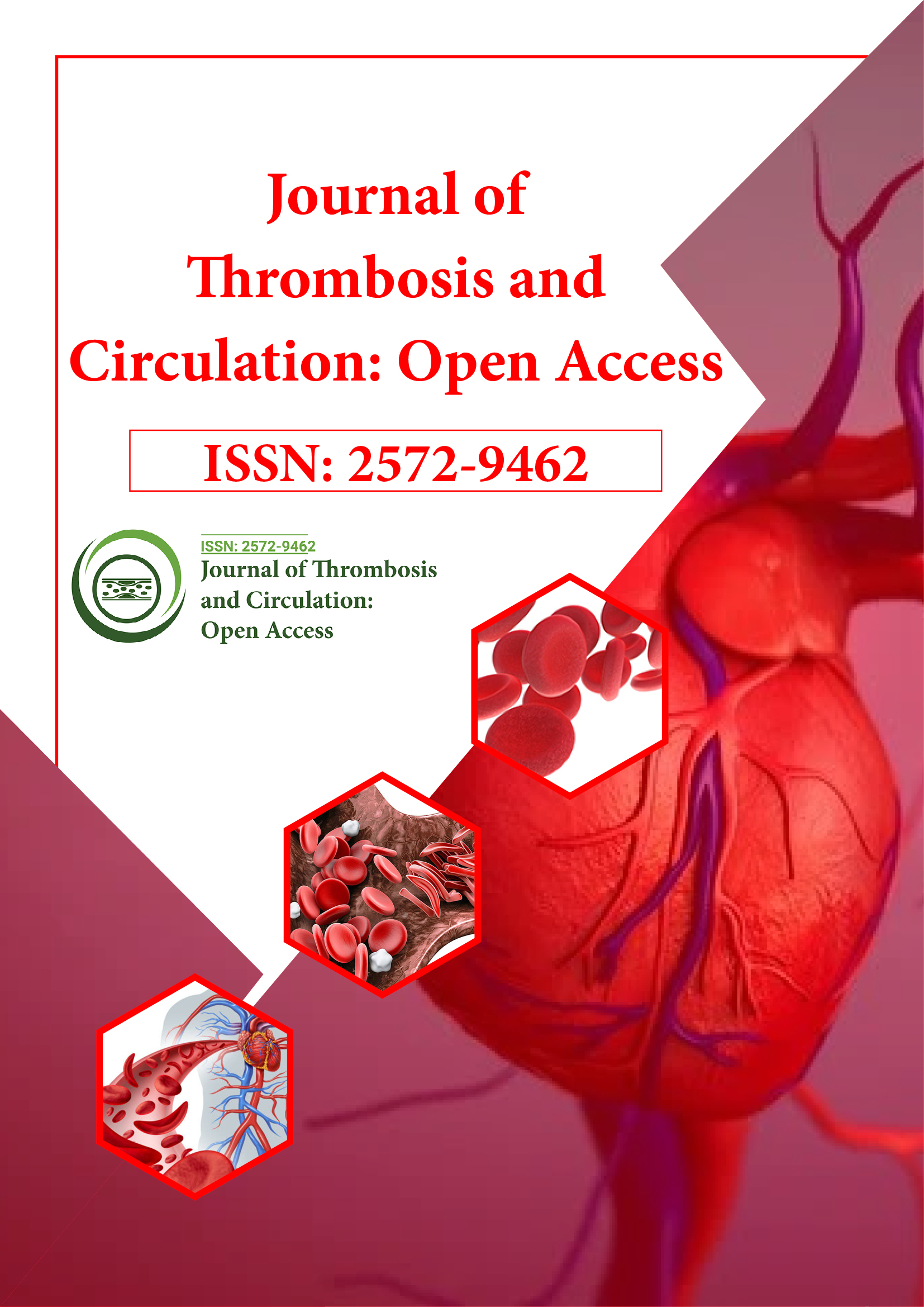Indexed In
- RefSeek
- Hamdard University
- EBSCO A-Z
- Publons
- Google Scholar
Useful Links
Share This Page
Journal Flyer

Open Access Journals
- Agri and Aquaculture
- Biochemistry
- Bioinformatics & Systems Biology
- Business & Management
- Chemistry
- Clinical Sciences
- Engineering
- Food & Nutrition
- General Science
- Genetics & Molecular Biology
- Immunology & Microbiology
- Medical Sciences
- Neuroscience & Psychology
- Nursing & Health Care
- Pharmaceutical Sciences
Commentary - (2022) Volume 8, Issue 1
Brief Note on Deep Vein Thrombosis
Bing Lou*Received: 20-Dec-2021, Manuscript No. JTCOA-22-1117; Editor assigned: 22-Dec-2021, Pre QC No. JTCOA-22-1117; Reviewed: 05-Jan-2022, QC No. JTCOA-22-1117; Revised: 10-Jan-2022, Manuscript No. JTCOA-22-1117; Published: 17-Jan-0022, DOI: 10.35248/ 2572-9462, 22.1.176
Description
Deep Vein Thrombosis (DVT) occurs when a blood clot (thrombus) forms in one or more deep veins (usually the legs) in the body. Deep vein thrombosis can cause pain and swelling in the lower extremities, but it can occur in the absence of symptoms. If we have certain conditions that affect blood clotting, we can get DVT. If we do not move for a long time, blood clots in legs may also occur. Deep vein thrombosis can be very serious because the blood clots can break up in the veins, move through the bloodstream, stay in the lungs, and block the bloodstream (pulmonary embolism). However, pulmonary embolism can occur without evidence of DVT. When DVT and pulmonary embolism occur at the same time, it is called Venous Thrombo Embolism (VTE).
Deep Vein Thrombosis (DVT) is a clinical term for thrombosis formed deep inside a vein. According to the American Heart Association, about 600,000 people are hospitalized for DVT each year in the United States. DVT usually occurs on the legs, but it can occur anywhere on the body.
DVT symptoms
According to a reliable source, the Centers for Disease Control and Prevention (CDC), only about half of people in this condition experience symptoms of DVT. Common symptoms of DVT are:
• Swelling of the foot, ankle, or leg, usually one side
• Affected leg cramping pain, usually starting with the calf
• Severe unexplained pain in the feet and ankles
• Areas of skin that feels warmer than the surrounding skin
• The affected skin may be pale, reddish, or bluish, depending on the color of the skin.
People with deep vein thrombosis in the upper limbs or blood clots in the arms may have no symptoms. In this case, the common symptoms are:
• Neck pain
• Shoulder stiffness
• Swelling of arms and hands
• Blue or dark skin color
• Pain spreading from the arm to the forearm
• Weakness
Some people may not know that they have DVT until they receive emergency treatment for pulmonary embolism (a blood clot in the lungs). Pulmonary embolism can occur when a DVT thrombosis moves from the arm or leg to the lungs. Obstruction of the arteries in the lungs can be life-threatening and require urgent treatment.
Complications of DVT include
Pulmonary Embolism (PE): PE is a potentially life-threatening complication associated with DVT. This occurs when blood vessels in the lungs are blocked by another part of the body, a blood clot (thrombus) that normally travels from the legs to the lungs. If we have any signs or symptoms of PE, it is important to see a doctor immediately. PE can cause sudden shortness of breath, chest pain when inhaling or coughing, rapid breathing, rapid heart rate, faint or faint feeling, and hemoptysis.
Post-phlebitis syndrome: Damage to veins caused by blood clots reduces blood flow to the affected area, causing pain and swelling in the legs, discoloration of the skin, and pain in the skin.
Treatment complications: Complications can be caused by anticoagulants used to treat DVT. Bleeding is a worrying side effect of anticoagulants. It is important to have regular blood tests while taking these medications.
Medications
According to a reliable source, the Centers for Disease Control and Prevention (CDC), only about half of people in this condition experience symptoms of DVT.
Important inf ormation about medication:
• Take medicine as directed by the doctor.
• Perform blood tests as directed by the doctor and keep all scheduled laboratory appointments.
• Do not stop or start taking medications (including prescription/ over-the-counter medications and dietary supplements) without consulting any doctor.
• Talk to a doctor about the diet. Changes may be required depending on the medication that we are taking.
Prevention
Patients with DVT may require hospital treatment. Others can be treated out patiently. Treatment includes medication, compression stockings, and lifting of the affected leg. Larger blood clots may require more invasive tests and treatment.
The main goals of treatments are:
• Prevents the growth of blood clots.
• Prevents blood clots in the veins from breaking and moving to the lungs.
• Reduce the risk of another blood clot.
• Prevents long-term complications (chronic venous insufficiency) due to blood clots.
Citation: Lou B (2022) Brief Note on Deep Vein Thrombosis. J Thrombo Cir. 8:176.
Copyright: © 2022 Lou B. This is an open-access article distributed under the terms of the Creative Commons Attribution License, which permits unrestricted use, distribution, and reproduction in any medium, provided the original author and source are credited.
